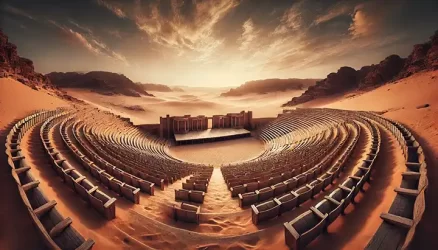The Underwater City of Heracleion: Ancient Egypt’s Lost Atlantis

Once a vibrant and bustling port, the city of Heracleion lay forgotten beneath the waters of the Mediterranean Sea for over 1,200 years until its rediscovery in the year 2000. Often dubbed the “Atlantis of Egypt,” this ancient city offers a fascinating glimpse into Egypt’s dynamic maritime history. Located near the mouth of the Nile River, Heracleion (known to the ancient Egyptians as Thonis) was a vital hub for trade, culture, and religion in its prime.
History of Heracleion
Heracleion, named after the Greek hero Heracles, is believed to have been founded around the 8th century BCE. The city flourished during the late Pharaonic period, when it served as Egypt’s primary port before the foundation of Alexandria. The city was an essential trading post, connecting Egypt to the Mediterranean world. Ships from Greece, Phoenicia, and other parts of the Mediterranean docked in Heracleion, bringing goods, culture, and people.
The city was also a center for religious activities. Heracleion was home to the grand Temple of Amun-Gereb, where Pharaohs would often go to receive divine blessings before making important decisions. The temple was a place of pilgrimage for many, especially during the dynastic periods.

The Mysterious Sinking
Around the 2nd century BCE, Heracleion began to decline due to the rise of Alexandria as the region’s main commercial hub. But its true demise came around the 8th century CE, when a combination of natural disasters caused the city to sink beneath the Mediterranean. Scholars believe that earthquakes and tsunamis, combined with the city’s location on unstable ground, caused the collapse. As sea levels rose, Heracleion was swallowed by the water and remained submerged for over a millennium.

Rediscovery
Heracleion’s incredible rediscovery was made by French marine archaeologist Franck Goddio in 2000. With the help of advanced sonar technology and a dedicated team of archaeologists, the remnants of this lost city were found buried beneath 30 feet of water and layers of sand and silt. What they uncovered was breathtaking: statues, temples, coins, jewelry, and entire ships that had been preserved in remarkably good condition due to their underwater resting place.

The Treasures of Heracleion
One of the most stunning finds from the city is the giant statues of gods and pharaohs, including an 18-foot-tall statue of Hapi, the god of the Nile’s annual flooding. Numerous stelae (stone slabs with inscriptions) were discovered, revealing fascinating insights into the city’s religious and social structure.
Dozens of ships, some of which date back to the 4th century BCE, have also been uncovered. These vessels carried everything from everyday goods to valuable treasures, offering a snapshot of ancient Egypt’s vibrant trade networks. Artifacts such as gold coins, bronze statues, and ritual objects further reveal the city’s prosperity and its role as a religious and economic center.

Significance of Heracleion
Heracleion’s rediscovery has greatly enriched our understanding of Egypt’s interaction with the Mediterranean world. The city not only served as a trade hub but was also a melting pot of Greek and Egyptian cultures. Many of the found artifacts reflect a blend of Greek and Egyptian influences, demonstrating how these two great civilizations coexisted and interacted through commerce and religion.
For Egyptologists, marine archaeologists, and historians, Heracleion is a treasure trove of information. Its well-preserved state due to the underwater conditions provides a unique look at ancient urban planning, architecture, and religious life.

The Underwater City of Heracleion is one of the most extraordinary archaeological discoveries of the modern era. Its submersion beneath the Mediterranean helped protect it from the ravages of time, making it a unique and invaluable site for understanding ancient Egyptian culture, trade, and religious practices. Even today, excavations continue, and who knows what other secrets this sunken city may still hold?
Plan your trip to Alexandria, Egypt


















